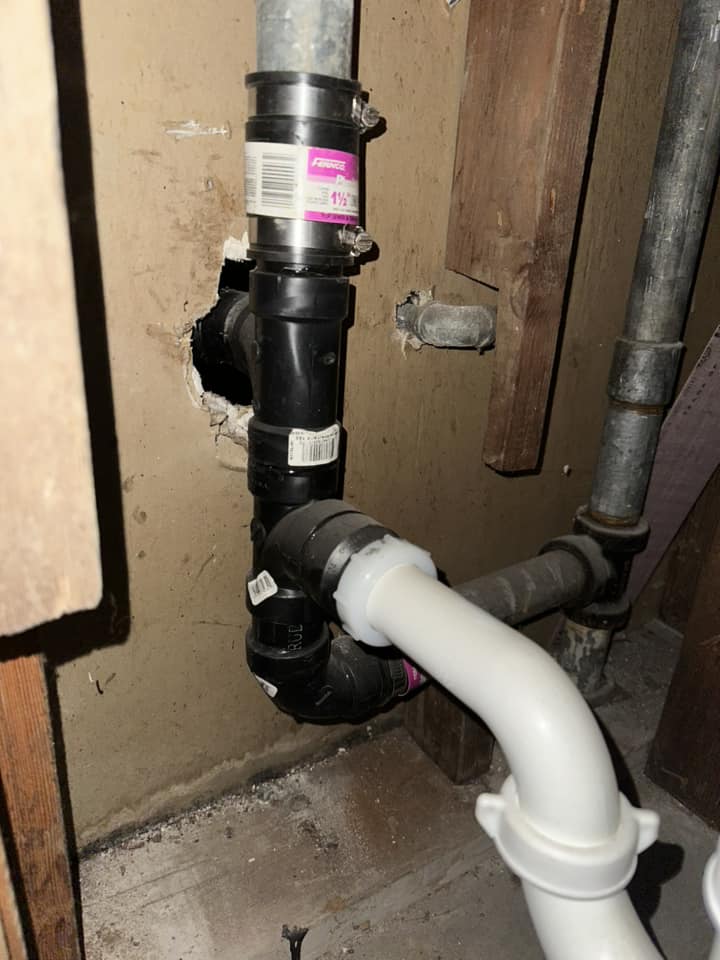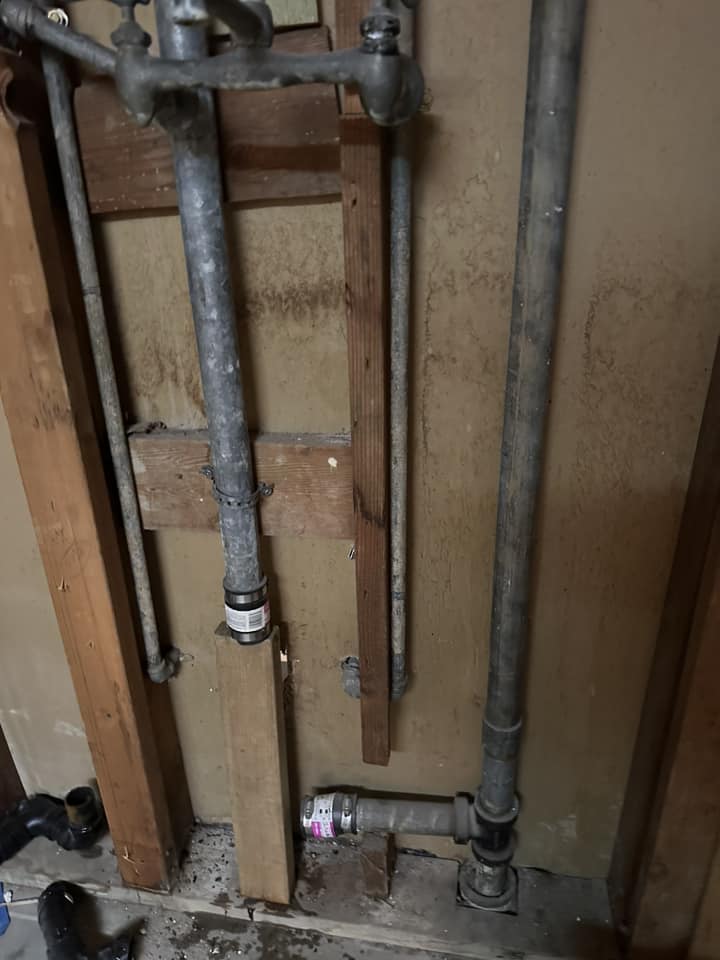Can I remove the vertical galvanized pipe connected to the fernco without affecting the bathroom sink’s drainage system?
1 year ago
Last Updated: May 31, 2024
Hey there! I have a plumbing question about my sink drain situation. I need to get rid of an old darkroom sink that was next to my bathroom sink. I’m trying to remove the darkroom sink plumbing while keeping the drain for the bathroom sink intact.
I noticed that the vertical galvanized pipe connected to the fernco doesn’t seem to be attached to anything above – it just ends somewhere in the wall. Do you think I can remove that pipe, or is it serving as a vent?
I’ve attached some photos for reference – the first one shows the original setup and the second one shows how it looks now with a board supporting the pipe.
Thanks for your help!


Sure, but we should make sure to go above and seal it off properly.
Can we remove the vertical galvanized pipe, or does it need to stay as a vent? I want to take the whole thing out.
Of course, we can definitely do that. And we should also make sure to cap it off properly.
Hey there, I’m thinking of redoing the plumbing from the bathroom sink to directly connect to the tee on the right side. I’ll probably notice any venting problems right away if the drainage isn’t working.
It seems like a vent. If it ended in the middle of the wall, your house would probably stink. Since you’re not complaining about any bad smells, it must be a vent that goes through the roof.
Definitely seems like a vent stack. You should be able to see it on the roof. If it’s not there, don’t dismiss it without checking the attic. In the past, they were often terminated in the attic.
Will take a look in the attic. Thankfully, he found that the pipe doesn’t go through the roof. The only fixture still connected to this pipe is the bathroom sink.
No roof penetration, so I’m going to reroute the bath sink plumbing to connect directly to the tee instead of removing it.
Sounds like there’s probably a vent in place and it’s probably functioning properly. If it’s not broken, no need to fix it unless necessary.
That vent could be installed in any place along the floor or ceiling joists. It’s important to keep it there for proper ventilation for the sinks. The previous vent had to be connected somewhere.
Can you see where the subject pipe ends? If not, don’t make assumptions. You need to determine if it’s capped off, used as a drain for a sink, tub, or shower, or serving as a vent or connecting to another plumbing fixture. Once you know its purpose, then you can inquire.
One way to handle it would be to attach it to the lower pipe using an elbow, and then you’re good to go. If any water gets in (potentially from above, like rainwater from a high point), it will flow down the drain instead of getting trapped in the pipe. Plus, you won’t need to cut into the walls upstairs to disconnect it.